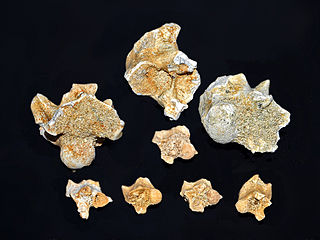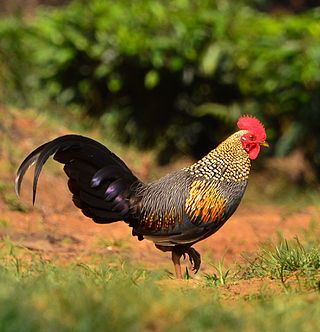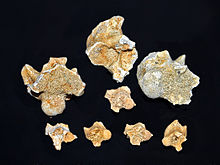
Colubridae is a family of snakes. With 249 genera, it is the largest snake family. The earliest fossil species of the family date back to the Late Eocene epoch, with earlier origins suspected. Colubrid snakes are found on every continent except Antarctica.

Plotopteridae is an extinct family of flightless seabirds with uncertain placement, generally considered as member of order Suliformes. They exhibited remarkable convergent evolution with the penguins, particularly with the now extinct giant penguins. That they lived in the North Pacific, the other side of the world from the penguins, has led to them being described at times as the Northern Hemisphere's penguins, though they were not closely related. More recent studies have shown, however, that the shoulder-girdle, forelimb and sternum of plotopterids differ significantly from those of penguins, so comparisons in terms of function may not be entirely accurate. Plotopterids are regarded as closely related to Anhingidae (darters) and Phalacrocoracidae (cormorants). On the other hand, there is a theory that this group may have a common ancestor with penguins due to the similarity of forelimb and brain morphology. However, the endocast morphology of stem group Sphenisciformes differs from both Plotopteridae and modern penguins.

Gigantophis is an extinct genus represented by its sole member Gigantophis garstini, a giant snake. Before the Paleocene constrictor genus Titanoboa was described from Colombia in 2009, Gigantophis garstini was regarded as the largest snake ever recorded. It lived about 40 million years ago during the Eocene epoch of the Paleogene Period, in the Paratethys Sea, within the northern Sahara, where Egypt and Algeria are now located.

Palaeophis is an extinct genus of marine snake that is the type genus of the extinct snake family Palaeophiidae.

The Alethinophidia are an infraorder of snakes that includes all snakes other than blind snakes and thread snakes. Snakes have long been grouped into families within Alethinophidia based on their morphology, especially that of their teeth. More modern phylogenetic hypotheses using genetic data support the recognition of 19 extant families, although the taxonomy of alethinophidian snakes has long been debated, and ultimately the decision whether to assign a particular clade to a particular Linnaean rank is arbitrary.

Dissacus is a genus of extinct carnivorous jackal to coyote-sized mammals within the family Mesonychidae, an early group of hoofed mammals that evolved into hunters and omnivores. Their fossils in Paleocene to Early Eocene aged strata in France, Asia and southwest North America, from 66 to 50.3 mya, existed for approximately 15.7 million years.

The Fur Formation is a marine geological formation of Ypresian age which crops out in the Limfjord region of northern Denmark from Silstrup via Mors and Fur to Ertebølle, and can be seen in many cliffs and quarries in the area. The Diatomite Cliffs is on the Danish list of tentative candidates for World Heritage and may become a World Heritage site. Fossils found in the Fur Formation are primarily housed at the Fossil and Mo-clay Museum on Mors Island, the Fur Museum on Fur Island, and the Natural History Museum of Denmark in Copenhagen.

Diplocynodon is an extinct genus of alligatoroid crocodilian that lived during the Paleocene to Middle Miocene in Europe. Some species may have reached lengths of 3 metres (9.8 ft), while others probably did not exceed 1 metre (3.3 ft). They are almost exclusively found in freshwater environments. The various species are thought to have been opportunistic aquatic predators.

Quercygale is an extinct genus of placental mammals from the clade Carnivoraformes, that lived in Europe during the early to late Eocene.
Eremosuchus is an extinct genus of sebecosuchian mesoeucrocodylian. Fossils have been found from El Kohol, Algeria of Eocene age. It had serrated, ziphodont teeth.

Libelluloidea is a superfamily of dragonflies.

Pangalliformes is the scientific name of a provisional clade of birds within the group Galloanserae. It is defined as all birds more closely related to chickens than to ducks, and includes all modern chickens, turkeys, pheasants, and megapodes, as well as extinct species that do not fall within the crown group Galliformes.

Lesmesodon is an extinct genus of placental mammals from extinct family Proviverridae within extinct superfamily Hyaenodontoidea, that lived during the Early to Middle Eocene. It was found in France and in the Messel Pit in Germany. Lesmesodon was a weasel-sized carnivorous mammal.

The Oulad Abdoun Basin is a phosphate sedimentary basin located in Morocco, near the city of Khouribga. It is the largest in Morocco, comprising 44% of Morocco's phosphate reserves, and at least 26.8 billion tons of phosphate. It is also known as an important site for vertebrate fossils, with deposits ranging from the Late Cretaceous (Cenomanian-Turonian) to the Eocene epoch (Ypresian), a period of about 25 million years.

Coniophis is an extinct genus of snakes from the late Cretaceous period. The type species, Coniophis precedes, was about 7 cm long and had snake-like teeth and body form, with a skull and a largely lizard-like bone structure. It probably ate small vertebrates. The fossil remains of Coniophis were first discovered at the end of the 19th century in the Lance Formation of the US state of Wyoming, and were described in 1892 by Othniel Charles Marsh. For the genus Coniophis, a number of other species have been described. Their affiliation is, however, poorly secured, mostly based on vertebrae descriptions from only a few fossils.
This list of fossil reptiles described in 2020 is a list of new taxa of fossil reptiles that were described during the year 2020, as well as other significant discoveries and events related to reptile paleontology that occurred in 2020.

Acrochordoidea is a superfamily of snakes that contains only one extant family, the file snakes (Acrochordidae), as well as two extinct families, Nigerophiidae and Palaeophiidae. Members of this superfamily are largely aquatic in nature, with some species found in marine habitats, much as with the only distantly related sea snakes. Members of Palaeophiidae and Nigerophiidae could grow incredibly large and some species, such as members of the genus Palaeophis, were among the largest snakes to ever exist.
Maliamia is an extinct genus of amiid ray-finned fish from the Early Eocene, known from fragmentary remains found in the Tamaguélelt Formation of Mali. It was described in 1989, based on fossils recovered by three separate expeditions in 1975, 1979–80, and 1981. The type species is Maliamia gigas, named in reference to its large size.

Nigerophiidae is an extinct family of marine snakes known from the Late Cretaceous to the Paleogene. Species of this family were found throughout much of the former Tethys Ocean. Their taxonomic identity is uncertain due to their fragmentary remains. The earliest nigerophiid is Nubianophis from the Campanian of Sudan.
Grand Daoui is a quarry in the Ouled Abdoun Basin of Morocco known for its fossils. It is the discovery place of Phosphatherium escuilliei, the earliest known proboscidean. It was the location for several field parties between 1997 and 2001, which allowed survey of the geological and paleontological context of Phosphatherium localities. It is also rich in marine vertebrae fossils. All Phosphatherium remains to date have been found in the quarry. The discovery of fossils there has aided in the study of early African placental fauna. The marine snake Palaeophis maghrebianus is also known from the locality, as well as the primitive gavialoid Argochampsa krebsi.
















